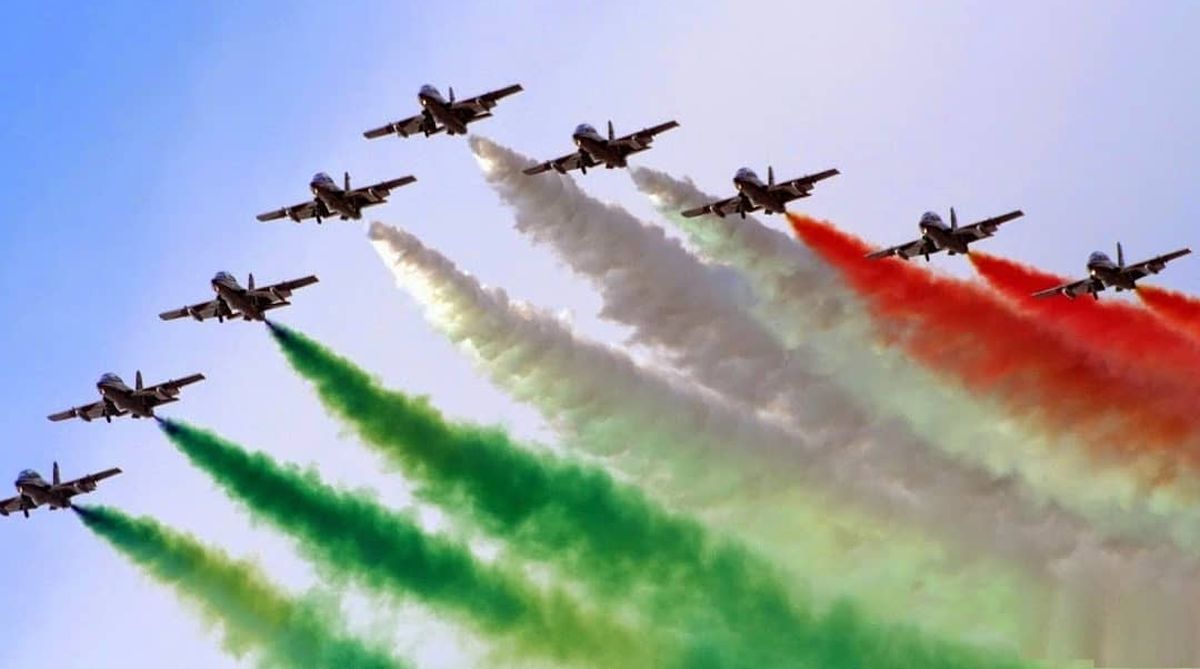
Manas Dasgupta
NEW DELHI, Oct 5: Even as India and China are due to hold the seventh round of corps-commander level talks on October 12 for a possible solution to the five-month old border stand-off, the Indian Air Force chief said India had “catered for all scenarios and are fully capable of handling any threat.”
Addressing the media on Monday three days ahead of the Air Force Day parade on October 8, Air Chief Marshal RKS Bhadauria said he was not undermining the strength of the People’s Liberation Army or the strike capability of the Chinese air force, but the introduction of the Rafale fighter jets in the Indian Air Force had given it an added advantage. “Integration of Rafales brings in a platform which is way ahead and would give us an edge and capability to strike first and deep,” Bhadauria said.
He said India was fully capable of handling any threat from China over the border standoff along the Line of Control (LAC) in eastern Ladakh. He agreed that the Chinese air force included surface-to-air systems in the Ladakh theatre, air-launched long-distance weapons and Chengdu J-20, which is a fifth-generation fighter with advanced sensors and weapons, but pointed out China did not have advanced engine tech that India possessed. He also hinted that even in a scenario of two-pronged attack, considering that Pakistan has kept the defence forces engaged on the Kashmir border, India would not be under any threat.
Asked about the progress on disengagement talks with China in the Ladakh sector, Bhadauria said, “The talks towards disengagement, followed by de-escalation, are on. We hope that the talks will progress along the lines that are expected. A lot of what happens in Eastern Ladakh depends on talks. The progress is slow, but there is a clear intent on both sides,” he said.
He agreed that because of slow progress in talks, there was an increase in the effort to dig-in for winter in terms of forces on ground and deployment of air assets in airfields close by. “Defence forces see the ground reality after that. Our further action will depend on ground realities,” he said.
The IAF chief assured that forces were firmly deployed and were ready to handle any contingency along the border. “We have deployed to all relevant operational locations, required to access this area,” he added.
Bhadauria added that India has operationalised fighter jets Rafale, helicopters Chinooks and Apache and integrated them as per IAF’s concept of operations in record time. “In the next 3 years, we’ll see Rafale and LCA Mark 1 squadrons operating with full strength, along with additional MiG-29 being ordered in addition to current fleets, ‘’ he said.
He also shared the vision to continue to scale up IAF’s combat capability and credibility as a force to reckon through modernisation and operational training, and substantially increase indigenous equipment to achieve self-reliance and strategic autonomy.
The Air Force Day fly-past which for the first time will see the public appearance of the Rafale fighter jets, will include total of 56 aircraft, including 19 choppers and seven transport aircraft. The newly-inducted Rafale fighter jets have been made operational in the Ladakh theatre where the military is on its highest state of alert amid the border standoff with neighbouring China. The IAF currently has a fleet of five Rafale fighters. India ordered 36 Rafale jets from France in a deal worth Rs 59,000 crore in September, 2016.
Jaguar, Sukhoi-30, Mig 29, Tejas, Mirage 2000, Mig 21 Bison will be part of the parade in addition to Mi 35 gunships, Apache attack choppers, C 17 heavy lifters, C130 J Special Ops planes. The Chinook multi-mission choppers will also make an appearance during the fly-past.
“Matrix of threat facing country is complex,” Bhadauria said and added, “emerging threats mandate us to have robust capabilities of the IAF.” He said though India had not come close to an airstrike against China, it was still prepared for it.
The defence analysts point out that in addition to the Indo-China border stand-off in eastern Ladakh, the situation on the Kashmir front has also kept hitting up. According to reports, the ceasefire violations by the Pakistani troops at the LoC reached a record 17-year high. A report tabled in Parliament on the first day of the Monsoon Session found 3,186 ceasefire violations by the Pakistan Army this year along the Indo-Pak border from January 1 to September 7. Besides this, 242 incidents of cross-border firing took place at the international border during the said period.













